Indonesian local and marginal vegetables: some are sometimes more expensive than meat. Moreover, the increasing price of Jengkol had influenced the national inflation rate in May 2013 (Sindonews). The case repeated several times in different years. the price of Jengkol in some areas is higher than the price of meat. This has an impact on the inflation rate in these areas. The following link is the complete news from several sources, such as Republika, Valora, Kompas, and Goriau.
Most of these local Indonesian vegetables are barely not using high technology in their cultivation. Their production relies more on traditional methods. However, even so, you can easily find some of them in all restaurants in Indonesia. They are a become favorites menu in some Indonesian restaurants.
What are these local and marginal vegetables in Indonesia?
- Jengkol/Dog fruit (fruits)
- Petai/Stinky Bean (fruits)
- Genjer/Velvetleaf (leaves)
- Melinjo/Gnetum (young leaves and flowers)
- Nangka/Jackfruit (fruit)
- Singkong/Cassava (young leaves)
- Kemangi/Basil (leaves)
- Kenikir/Cosmos (leaves and flowers)
- Leunca/Black Nightshade (young fruits)
- Pepaya/Papaya (young leaves)
- Pisang/Banana (young flowers)
- Katuk/Star Gooseberry (young leaves)
- Lamtoro/White Leadtree (young seeds)
Here is the list of Indonesian local and marginal vegetables:
1. Jengkol/Dog fruit (fruits)
Jengkol (Archidendron pauciflorum) is a member of the Fabaceae family. One of the native Indonesian plants which spread throughout Southeast Asia. Annual woody plant. The tree can reach 30 meters high. It will grow optimally in the lowland.
The nutritional content of Jengkol fruit according to a study: 23.3 grams of protein, 20.7 grams of carbohydrates, 166.67 mg of phosphorus, 140 mg of calcium, 4.7 mg of iron, 240 IU of vitamin A, 0.7 mg of vitamin B, 80 mg vitamin C.
As previously stated, the price of Jengkol is often higher than the price of beef and chicken. Sometimes it is a factor in the occurrence of inflation. Even if you understand, this Jengkol has an unpleasant smell. In addition, Jengkol contains djenkolic acid which is not good for our kidneys.
After eating Jengkol, you can be sure that your breath and urine will smell very bad. We used to call it “dragon breath”. You will also have a problem with the bathroom because of the strong smell of the Jengkol.

Bad smell but always has high demand
But still, the delicacy of Jengkol is the magnetism. Even though it is expensive, Jengkol is still interesting and the demand is high. For those of you who have never tasted it, Jengkol is worth a try. Don’t ask at the hotel restaurant where you stay. There will be no Jengkol. The cuisine is ready every day in Padang restaurants and Tegal restaurants which exist everywhere in Indonesia.
The type of dish that is quite famous is Semur Jengkol (a type of curry). Very well known as Padang cuisine (West Sumatra), and some food recipes in Java island. Especially in West Java, Jengkol is usually fried and eaten with Liwet rice (spiced rice), salted fish, and fresh vegetables. In some places in West Java, people sprout first the Jengkol’s fruit before cooking. They named it “Seupan“.
Dare to try?
2. Petai/Stinky Bean (fruits)
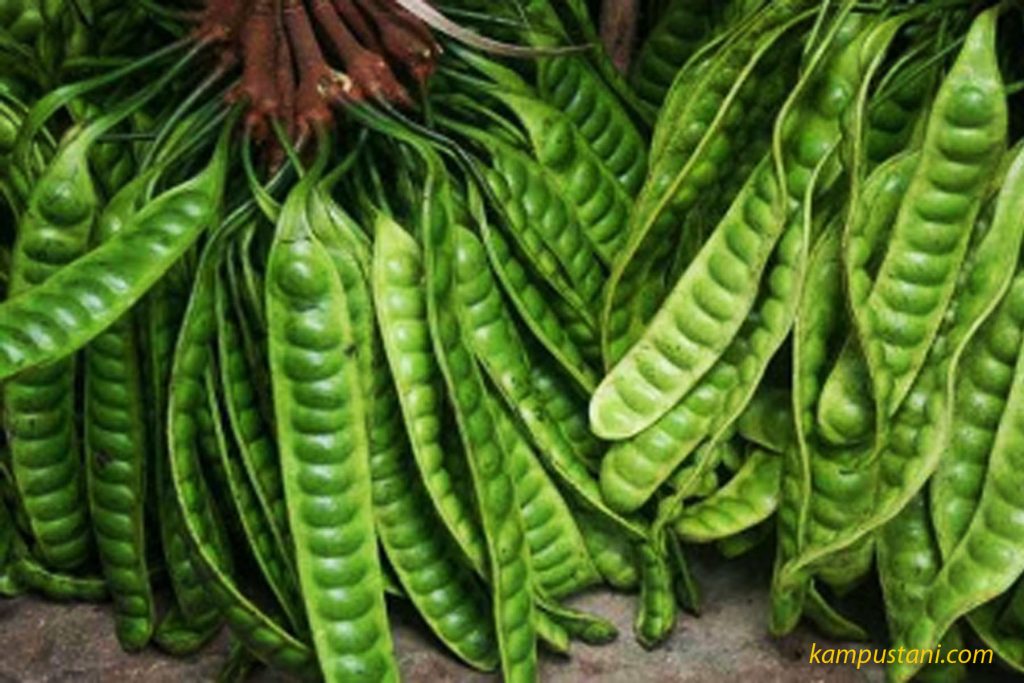
Petai is a member of the Fabaceae family and has the Latin name Parkia spioca. Annual plant 5-20 meters high. The fruit is a pod with an elongated shape. The plants can grow from low to medium land.
Petai prices have also exceeded the high price of meat. The cultivation is still not intensive, even though nowadays it still being one of the important vegetable commodities. Petai is generally growing as a barrier plant or grows spread among other plants in the backyard.
In line with Jengkol, Petai has a distinctive aroma. After eating Petai, you can be sure you will have “dragon’s breath”. Although it’s not as bad as when eating Jengkol, of course. But still smells.
Why the smell is bad?
From some of my foreign European colleagues who I offer Petai bean menu, almost all of them can enjoy it. It’s just they come with the next-day story, that their hotel bathroom smelling bad. The unpleasant smell of Petai is due to the high content of compounds, such as hexathionine, tetrathiane, trithiolane, pentathiopane, pentathiocane and tetrathiepane.
Petai is not common to become the main ingredient in the cooking menu. Generally, Petai is cook as a mixture with other food ingredients. You can order from seafood with Petai to nasi goreng with Petai. One famous restaurant, named Solaria, always has delicious Nasi goreng Petai in their daily menu.
3. Genjer/Velvetleaf (leaves)
Because of its popularity as a grassroots food, the name of this Genjer was once used as a song title. However, because it is identical to communist ideology, then this song became one of the songs that were banned.
Genjer has the Latin name Limnocharis flava. This plant is an aquatic plant that can grow in lowland swamps to highlands. Genjer is very famous for residents on the island of Java. There is no plant breeding and variety development process specifically for genjer. All Genjers in Indonesia is the result of natural selection because farmers only reproduce and plant vegetatively.
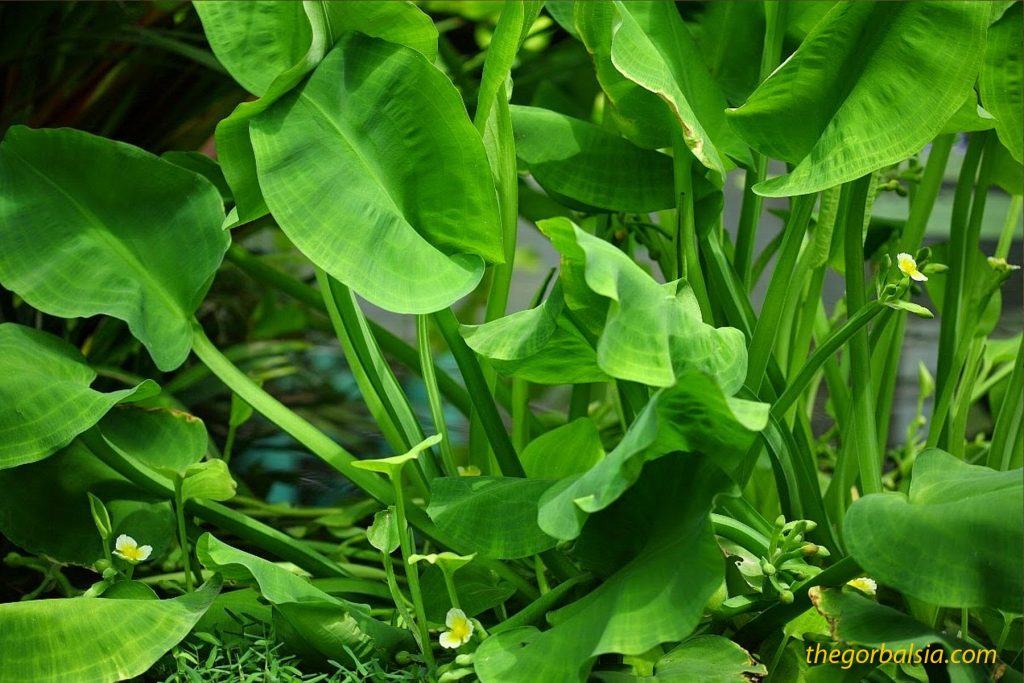
All parts of the genjer are edible. But the common ones are the stems, leaves, and flowers. The most common menu item from tumis genjer (mixed with spices). When cooking, it can be without mixture, or mixed with anchovies, tempeh, Tauco, or Oncom. Saute with the existing spices, then you can taste the food.
4. Melinjo/Gnetum (young leaves, flowers)
If you travel to Indonesia and looking for a vegetable soup with strong and fresh herbs, try Sayur Asam. Young leaves and flowers of Melinjo become an important ingredient in the Sayur Asam recipe. Sayur Asam is one of the most famous Indonesian cuisines. The other parts of Melinjo use in the vegetable recipe is fruit rind (exocarp). Besides, the bean is used as Melinjo chips.
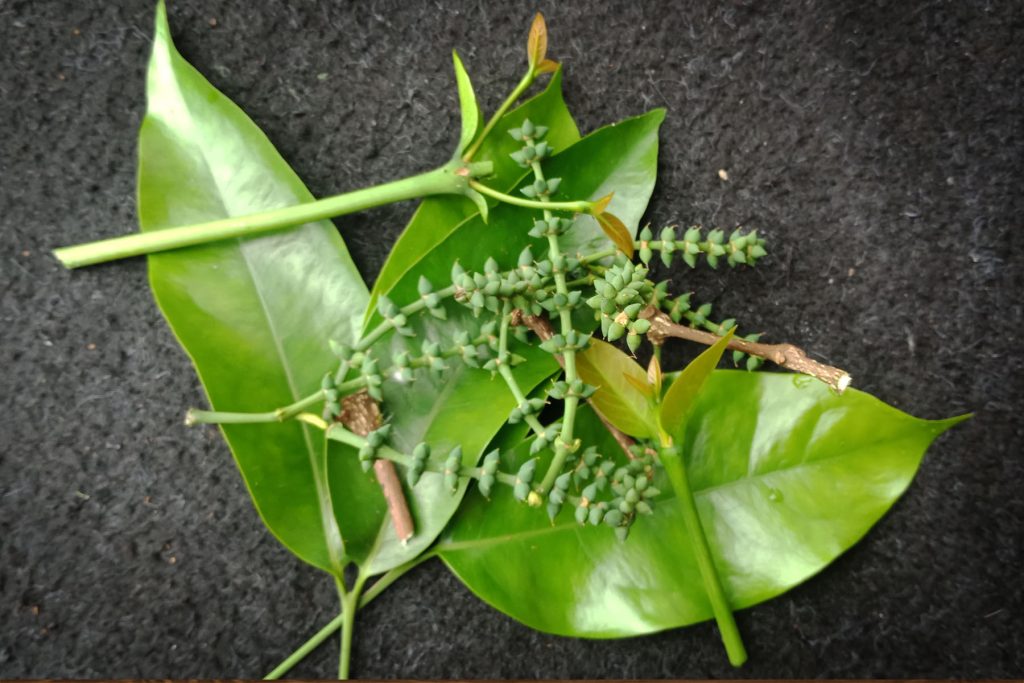
Young leaves of Melinjo has high nutrition content. From nilaigizi site datasheet, we can see the high content of vitamin C, copper, and dietary fiber. Furthermore, young Melinjo leaves also have a high content of antioxidants.
Melinjo (Gnetum gnemon) is an Indonesian native plant. The distribution is very wide and easy to find from the lowlands to the highlands. But the cultivation still in the traditional way without any high technology in it.
5. Nangka/Jackfruit (young fruits)

If you have been to Jogjakarta, then you must remember that another name for Jogjakarta is Gudeg city. Gudeg is one type of food from young jackfruit. So famous is Gudeg, that finally, this food recipe spread throughout Indonesia.
Besides being famous as a vegetable ingredient, Jackfruit which smells strong is also one of Indonesia’s local fruits. The fruit is yellowish in color and very sweet.
Jackfruit is a native Indonesian plant from the Moraceae family. Its Latin name is Artocarpus heterophyllus. A perennial plant whose fruit lies hanging from the stem. This jackfruit is gummy and very sticky on the outer skin of the fruit.
6. Singkong/Cassava (young leaves)
Indonesia has a long history with cassava. Its local name is Singkong. Famous for being a folk food menu. In Indonesia, the era of the 80-90s, until there is a term for “Anak singkong” to refer to ordinary people.
In fact, cassava has survived until now. One of the plants in which all parts are useful. The tubers are one of the most delicious foods in Indonesia. Industrial cassava is for raw material for tapioca and bioethanol. The young leaves become common for vegetables, and the wood is usually as fuel materials in several areas.
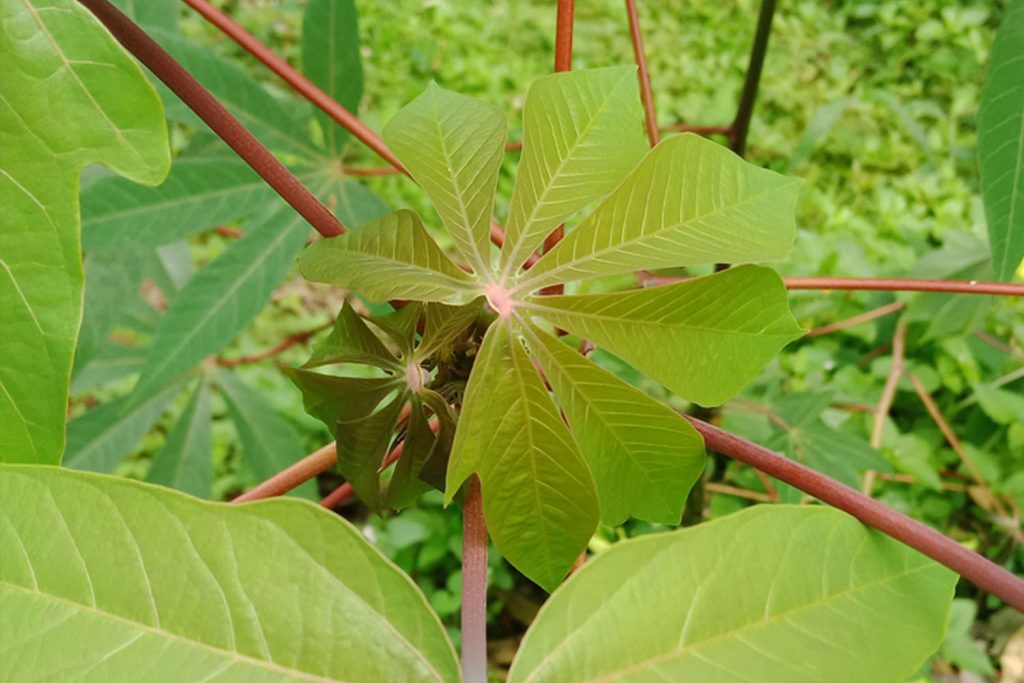
In general, there are 2 types of cassava that can be found in Indonesia. The first is sweet cassava whose leaves and tubers are safe for consumption. And the second is bitter cassava, for industrial raw materials. Bitter cassava has high cyanide content, so it cannot be eaten directly.
Just go to Padang restaurant and other local restaurants. Then you can easily find a menu made from cassava leaves. But unfortunately, you will get difficulties finding the cassava leaves menu in star hotels. Marginalized, but cassava leaves are very famous to most Indonesian people.
7. Kemangi/Basil (leaves)
Plants with the Latin name Ocimum sp. It is well known as a vegetable. Due to its nutritional content, basil can also be used as a medicinal plant. The content of several metabolite compounds is thought to function as anti-bacterial and anti-inflammatory.

Until now, basil seeds are still rarely produced in a modern way. Almost all basil seeds are local seeds resulting from natural selection. There is no incentive breeding process in Indonesia to produce new varieties.
Basil is usually used as a complement to cooking. This is because the aroma is very strong and distinctive. But basil is also very delicious when eaten raw. Basil is so famous, the cookpad site there are many recipes using basil.
8. Kenikir/Cosmos (young leaves and flowers)
As local vegetables, even it still marginal, but Kenikir still becomes one of the favorites for Indonesian peoples. Plants called Cosmos caudatus in the scientific name, originally from South America. In Indonesia, kenikir is a plant that is used as a vegetable. Its strong and distinctive aroma makes kenikir a distinctive menu for Pecel.
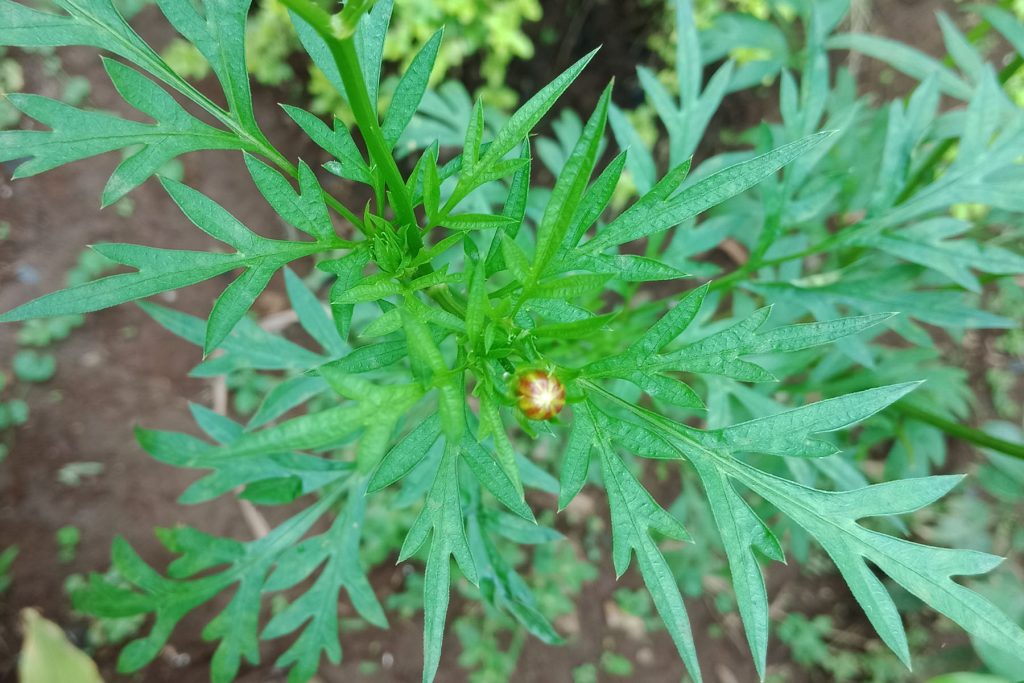
Kenikir grows optimally in the low to medium lands. It grows in the form of shrubs 75-120 cm high with bright yellow flowers and a distinctive smell. Kenikir leaves contain saponins, flavonoids, and essential oils. In some places, people also use kenikir as a medicinal plant to treat stomach ailments, lack of appetite, and as a biopesticide.
9. Leunca/Black Nightshade (young fruits)

Leunca is a local name in West Java. In all the literature I read this plant is called Solanum nigrum. But in my opinion, Leunca is Solanum scabrum. This assumption comes from visual observation and then compares it with various literature. This still needs further study.
You can easily find this menu using Leunca in Sundanese restaurants. Some Leunca based menu choices are generally available. If you want to try, Leunca is also good to eat as Lalab (eat directly in fresh).
10. Pepaya/Papaya (Young Leaves)
If most people are familiar with it, papaya is the delicious part of the fruit. So in Indonesia, papaya young leaves are delicious food. Although it tastes bitter, papaya leaves have their own aroma and taste that makes you want to eat again and again.
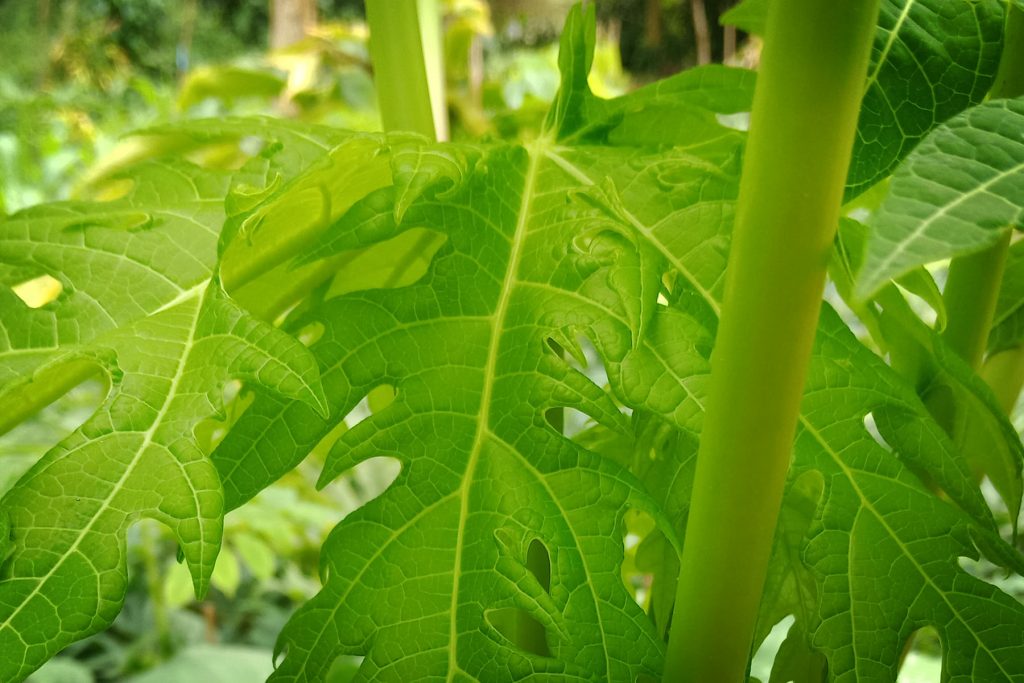
Papaya in Indonesia is very diverse even though this plant is native to South America. probably because of its easy distribution and cross-pollination, so that this plant has a high genetic diversity.
There are 3 sex types of papayas in nature. Females, males, and hermaphrodites. Female papayas generally have larger fruit than hermaphrodite types. Meanwhile, male papayas will only produce flowers. Male papaya flowers are also very well known for being used as vegetables.
11. Pisang/Banana (young flowers)

If you ask me which vegetables are the most delicious? My answer is the banana flower vegetable. And what kind of banana flower is the most delicious? The answer is a banana flower that has not yet come out of the bud. This phase is appropriate because it is young. So you can eat more. Banana flowers are generally eaten by sauteing or grabbing them first.
It turns out that in Thailand banana flowers are also famously used as vegetables. At a restaurant near Bangkok, I have eaten banana flowers that are boiled and processed like pickles.
12. Katuk/Star Gooseberry (young leaves)
Generally, Indonesian people know Katuk as a good menu for mothers who are breastfeeding. It turns out that this is not just a myth. Scientific facts prove that the Katuk leaves contain high lactagogum and prolactin. These two compounds play a role in the production of milk.
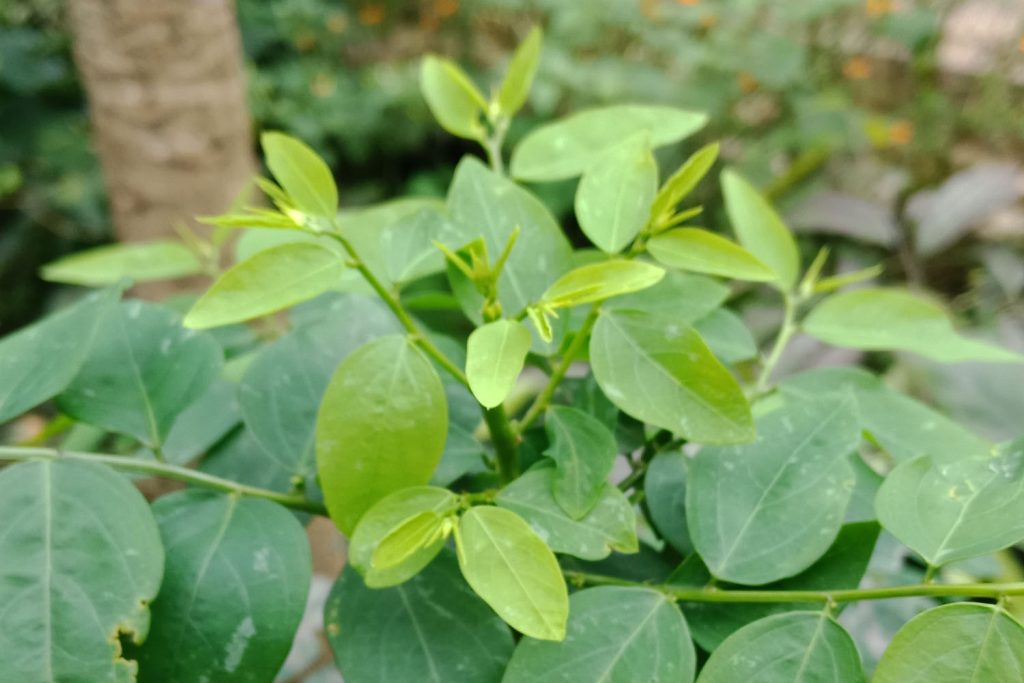
Katuk (Sauropus androgynus) is a member of the Phyllantaceae family. Annual plants that can grow from the lowlands to the highlands. Despite having seeds, generally, Katuk propagated vegetatively. Until now, there has been no special effort to cultivate it intensively. Katuk is only used as a barrier plant in the backyard.
If there are now serious effort, Katuk probably will disappear from the list of Indonesian local and marginal vegetables for the future.
13. Lamtoro/White Leadtree (young seeds)
The 80-90s era was the golden age of the Lamtoro (Leucaena leucocephala). Lamtoro is a member of the Fabaceae family. This plant spreads easily and is everywhere. However, since the massive attack of the Leucaena psyllid (Heteropsylla cubana), eventually, the local plants of Leucaena are slowly disappearing and are replaced with Lamtoro Gung (bigger types) which seem more resistant to the attack of this insect.

What is commonly consumed from this Lamtoro is the young seeds. Eaten directly or made into another menu. The most delicious menu you should try is the boiled Lamtoro seeds mixed with young coconut, anchovies, and local spices. Cooked wrapped in banana leaves. The result is one of the tastiest meals you will find difficult to find anywhere else.
Indonesian local and marginal vegetables, The local pride and ready to develop by using technology and knowledge
Those some local and marginal vegetables are not considered intensively cultivated. But in fact, they can survive and are still in demand by Indonesian peoples. They still exist even though there are many cultivated vegetables that are more widely available in the market.
There is a chance to develop these vegetables above in the direction of producing a new better variety. Better on yield, better on disease resistance, and better on nutrition content.
One day, after the knowledge and technology take part, these local and marginal vegetables may become one of the important Indonesian commodities.

always love to learn from nature. Passionate on studying plants in some aspects: the DNA, Identification, propagation, and their uses
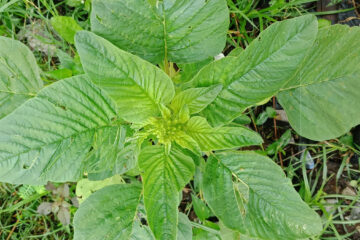

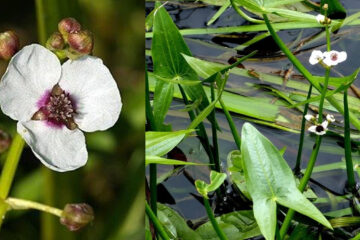
5 Comments
Taman bunga · June 18, 2023 at 8:55 am
Memiliki taman bunga adalah dambaan setiap pecinta alam dan keindahan. Taman bunga adalah wahana di mana keindahan alam berkumpul dalam harmoni yang mempesona. Dengan aneka macam jenis bunga yang mekar dengan beragam warna dan aroma, taman bunga menjadi surga kecil yang mengundang mata dan hati untuk terpesona. Dalam taman bunga, kita dapat menikmati paduan sempurna antara warna-warni bunga, hijaunya daun, dan kesegaran alam yang membawa kedamaian dan kegembiraan. Taman bunga adalah tempat di mana kita bisa melepaskan diri dari hiruk-pikuk dunia dan membiarkan diri kita tenggelam dalam keindahan yang tak tergantikan.
Jengkol bad smell and one of the most famous food in Indonesia · February 14, 2021 at 10:16 pm
[…] The Price sometimes equal or more expensive with meat […]
Endangered Plants in Indonesia: List of 55 endangered species · March 16, 2021 at 9:29 pm
[…] still grows in Banyuwangi Regency, East Java. local peoples use Wadung fruit as a seasoning for Sayur Asam. Some consume it […]
Edible Ornamental Plant | Berlangkas (Polyscias fruticosa) - · July 11, 2021 at 8:47 pm
[…] people recognize and use plants for vegetables and medicinal purposes. However, today some of these local edible ornamental plants are becoming increasingly […]
Forgotten vegetable and medicinal plant are an interesting topic · September 13, 2021 at 7:32 pm
[…] food. But nowadays, Kemarungan is difficult to find. This species may also put in the list of marginal vegetables in […]
Comments are closed.